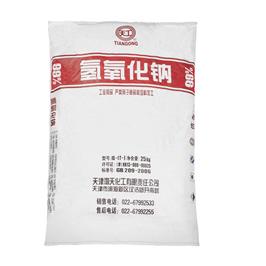Surface Treatment
Home-Product-Surface Treatment-Anodizing

Sodium hydrogen hydride 99%
Shape appearance:
White translucent crystalline solid. Its aqueous solution has astringent taste and slippery feel.
Product Usage:
Sodium hydroxide (NaOH) is extremely versatile. Used in the production of paper, soap, dyes, rayon, metal smelting, petroleum refining, cotton fabric finishing, coal tar product purification, and food processing, wood processing and machinery industries.
White translucent crystalline solid. Its aqueous solution has astringent taste and slippery feel.
Product Usage:
Sodium hydroxide (NaOH) is extremely versatile. Used in the production of paper, soap, dyes, rayon, metal smelting, petroleum refining, cotton fabric finishing, coal tar product purification, and food processing, wood processing and machinery industries.
- Previous:
- Sodium hydroxide 96%
- Next:
- Carbon core
Product Description
Warehousing and transportation:
The solid sodium hydroxide is put into a 0.5 mm thick steel drum and sealed tightly, and the net weight of each drum does not exceed 100 kg; plastic bag or two-layer kraft paper bag with full or middle opening steel drum; screw-top glass bottle, iron lid pressure glass Ordinary wooden boxes outside bottles, plastic bottles or metal drums (cans); glass bottles, plastic bottles or tinned steel drums (cans) with threaded mouths, full-bottom grid boxes, fiberboard boxes or plywood boxes; tinned steel drums ( Cans), metal drums (cans), plastic bottles or metal hose outer corrugated boxes. The packaging container should be complete and sealed, with obvious signs of "corrosive materials". For railway transportation, steel drums can be transported by gondola. The packaging should be complete when shipping, and the loading should be secure. During transportation, ensure that the container does not leak, collapse, fall, or damage, and is moisture-proof and rain-proof. If the packaging container is found to be rusted, cracked, holes, melted water, etc., the packaging should be replaced immediately or shipped as soon as possible. The damaged container can be repaired by soldering. It is strictly forbidden to mix and transport with combustibles or combustibles, acids, edible chemicals, etc. Transportation vehicles should be equipped with leakage emergency treatment equipment during transportation. Do not store and transport with flammable materials and acids.
Safety Precautions:
Entry route: inhalation, ingestion.
Health hazards: This product is strongly irritating and corrosive. Dust or smoke can irritate the eyes and respiratory tract and corrode the nasal septum. Direct contact of the skin and eyes with NaOH can cause burns. Mistake can cause burns in the digestive tract, mucosal erosion, bleeding and shock.
This product will not burn, and will generate a lot of heat when exposed to water and steam, forming a corrosive solution; it will neutralize with acid and emit heat; it is highly corrosive; it is harmful to the environment.
Combustion (decomposition) products: May produce harmful toxic fumes.
leakage
Isolate the leaked and contaminated area and set up warning signs around it. It is recommended that emergency handlers wear gas masks and chemical protective clothing. Do not directly touch the leakage. Use a clean shovel to collect it in a dry and clean covered container, add a small amount of NaOH to a large amount of water, adjust to neutral, and then put it into the wastewater system. It can also be washed with a lot of water, and the diluted washing water is put into the waste water system. If there is a large amount of leakage, collect and recycle or dispose of after harmless disposal.
Protective measures
Respiratory protection: wear a gas mask when necessary.
Eye protection: wear chemical safety glasses. Protective clothing: wear work clothes (made of anti-corrosion materials). Use with care, be careful of splashing into clothing, mouth and nose
Hand protection: wear rubber gloves.
Others: After work, take a shower and change clothes. Pay attention to personal hygiene.
first-aid
Skin contact: Rinse with water (dilute solution)/dry with cloth (concentrate), then wash with 5-10% magnesium sulfate or 3% boric acid solution and seek medical attention.
Eye contact: Lift the eyelid immediately and rinse with 3% boric acid solution. Seek medical attention.
Inhalation: quickly leave the scene to a place with fresh air. Give artificial respiration if necessary. Seek medical attention.
Ingestion: Neutralize with vinegar, 3 to 5% acetic acid or 5% dilute hydrochloric acid, a large amount of orange juice or lemon juice when a small amount of accidental ingestion occurs; give egg white, milk or vegetable oil and seek medical attention quickly. It is prohibited to induce vomiting and gastric lavage.
The solid sodium hydroxide is put into a 0.5 mm thick steel drum and sealed tightly, and the net weight of each drum does not exceed 100 kg; plastic bag or two-layer kraft paper bag with full or middle opening steel drum; screw-top glass bottle, iron lid pressure glass Ordinary wooden boxes outside bottles, plastic bottles or metal drums (cans); glass bottles, plastic bottles or tinned steel drums (cans) with threaded mouths, full-bottom grid boxes, fiberboard boxes or plywood boxes; tinned steel drums ( Cans), metal drums (cans), plastic bottles or metal hose outer corrugated boxes. The packaging container should be complete and sealed, with obvious signs of "corrosive materials". For railway transportation, steel drums can be transported by gondola. The packaging should be complete when shipping, and the loading should be secure. During transportation, ensure that the container does not leak, collapse, fall, or damage, and is moisture-proof and rain-proof. If the packaging container is found to be rusted, cracked, holes, melted water, etc., the packaging should be replaced immediately or shipped as soon as possible. The damaged container can be repaired by soldering. It is strictly forbidden to mix and transport with combustibles or combustibles, acids, edible chemicals, etc. Transportation vehicles should be equipped with leakage emergency treatment equipment during transportation. Do not store and transport with flammable materials and acids.
Safety Precautions:
Entry route: inhalation, ingestion.
Health hazards: This product is strongly irritating and corrosive. Dust or smoke can irritate the eyes and respiratory tract and corrode the nasal septum. Direct contact of the skin and eyes with NaOH can cause burns. Mistake can cause burns in the digestive tract, mucosal erosion, bleeding and shock.
This product will not burn, and will generate a lot of heat when exposed to water and steam, forming a corrosive solution; it will neutralize with acid and emit heat; it is highly corrosive; it is harmful to the environment.
Combustion (decomposition) products: May produce harmful toxic fumes.
leakage
Isolate the leaked and contaminated area and set up warning signs around it. It is recommended that emergency handlers wear gas masks and chemical protective clothing. Do not directly touch the leakage. Use a clean shovel to collect it in a dry and clean covered container, add a small amount of NaOH to a large amount of water, adjust to neutral, and then put it into the wastewater system. It can also be washed with a lot of water, and the diluted washing water is put into the waste water system. If there is a large amount of leakage, collect and recycle or dispose of after harmless disposal.
Protective measures
Respiratory protection: wear a gas mask when necessary.
Eye protection: wear chemical safety glasses. Protective clothing: wear work clothes (made of anti-corrosion materials). Use with care, be careful of splashing into clothing, mouth and nose
Hand protection: wear rubber gloves.
Others: After work, take a shower and change clothes. Pay attention to personal hygiene.
first-aid
Skin contact: Rinse with water (dilute solution)/dry with cloth (concentrate), then wash with 5-10% magnesium sulfate or 3% boric acid solution and seek medical attention.
Eye contact: Lift the eyelid immediately and rinse with 3% boric acid solution. Seek medical attention.
Inhalation: quickly leave the scene to a place with fresh air. Give artificial respiration if necessary. Seek medical attention.
Ingestion: Neutralize with vinegar, 3 to 5% acetic acid or 5% dilute hydrochloric acid, a large amount of orange juice or lemon juice when a small amount of accidental ingestion occurs; give egg white, milk or vegetable oil and seek medical attention quickly. It is prohibited to induce vomiting and gastric lavage.






 13603024855
13603024855 Follow us
Follow us